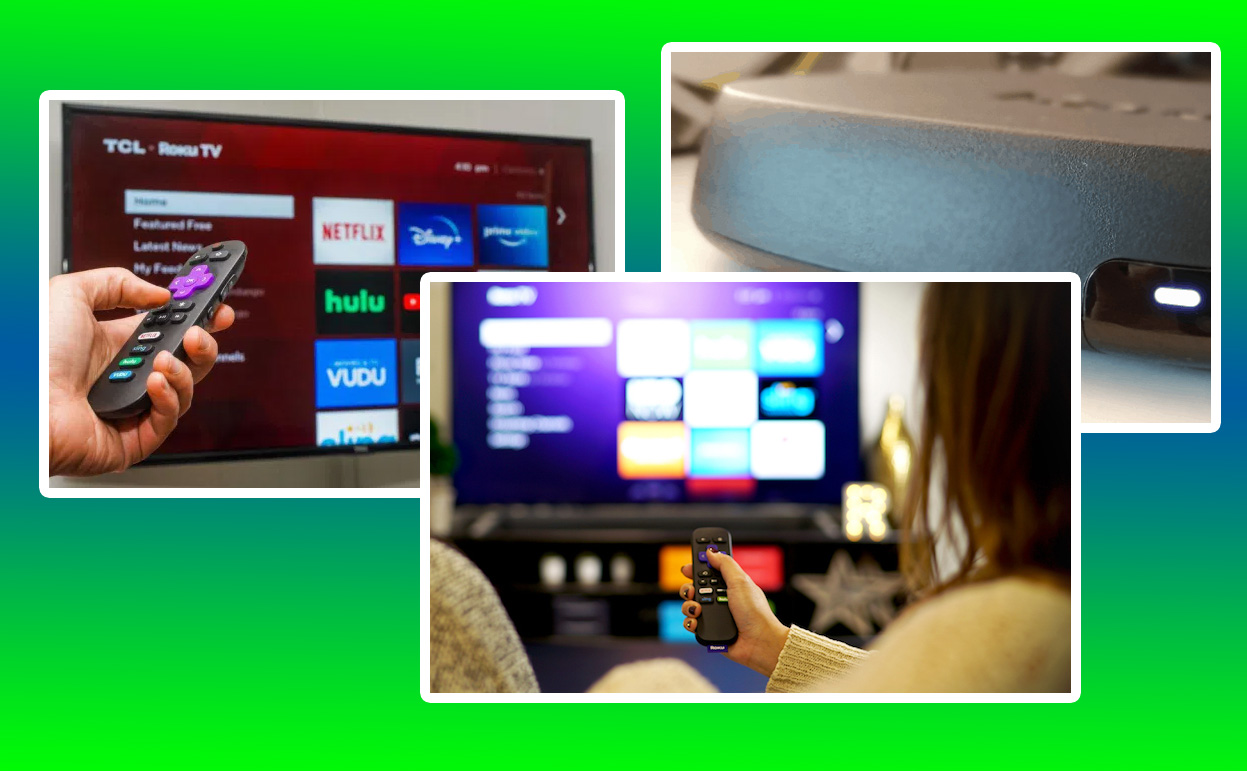Roku devices have become an essential part of many households, offering seamless streaming and access to a wealth of content. Yet, like all technology, they’re not immune to issues. One of the more concerning problems Roku users may encounter is an overheating warning.

This issue can interrupt your viewing experience and, if left unaddressed, may lead to long-term damage to your device. Understanding the causes and implementing effective fixes can restore your Roku’s performance and ensure a worry-free streaming experience.
Roku Overheating Warning and Fixes
Overheating in Roku devices is usually accompanied by specific warning signs. Most Roku models display an on-screen message, “Your device is overheating,” or show a solid red light instead of the usual white light. If you touch the device and it feels unusually warm to the touch, it’s another clear indicator.
Ignoring these warnings can have dire consequences, ranging from temporary performance dips to permanent hardware failure. Recognizing these signs early is crucial to safeguarding your Roku device and maintaining its longevity. By staying alert to these indicators, you can act promptly to prevent further complications and protect your investment in home entertainment technology.
The symptoms of overheating are often progressive, starting with subtle performance lags and culminating in outright warnings or shutdowns. If you’ve noticed your Roku struggling to keep up during intensive streaming sessions, it could be an early sign of overheating. Paying attention to these preliminary signs helps mitigate risks before they escalate.
Common Causes of Roku Overheating
Several factors can contribute to overheating in Roku devices, many of which stem from how and where the device is used. Understanding these causes helps in both preventing and addressing the issue effectively.
One of the primary reasons for overheating is poor placement. Roku devices are often placed near or behind TVs, where ventilation is minimal. These tight spaces trap heat, especially when combined with the TV’s own heat output. This lack of airflow creates a hot environment, putting unnecessary stress on the device’s components.
Another significant factor is continuous use. Streaming for extended periods can overwork the device, causing it to generate more heat than usual. Like any electronic device, Rokus need time to cool down during breaks. Prolonged sessions without pause can lead to sustained high temperatures, increasing the likelihood of damage over time.
Environmental factors, such as exposure to direct sunlight or high room temperatures, also play a critical role. If your Roku is positioned near a window or exposed to direct sunlight, the additional external heat can exacerbate the issue. Similarly, using the device in a poorly ventilated area can compound the problem, making it more difficult for the internal cooling mechanisms to function effectively.
Immediate Steps to Cool Down Your Roku
When faced with an overheating warning, quick action can prevent further complications. Start by turning off your Roku device and unplugging it from the power source. Allow it to cool down for at least 10 to 15 minutes. While the device is cooling, inspect its placement and surroundings.
If your Roku is placed in a confined space or near other heat-producing devices, relocate it to an open, well-ventilated area. Ensure that it is not exposed to direct sunlight or any external heat sources. Once the device has cooled, reconnect it and check if the warning persists. Taking these steps promptly can help mitigate potential damage and restore your device to optimal functionality.
For users who experience recurring overheating issues, consider using a fan or other cooling aid to help the device dissipate heat more effectively. Simple adjustments, such as slightly elevating the Roku to improve airflow, can also make a significant difference. Acting decisively during overheating warnings is crucial to maintaining the health of your device and preserving its performance over time.
Long-Term Fixes to Prevent Overheating
To ensure that your Roku device doesn’t overheat in the future, consider implementing the following preventive measures:
- Optimize Placement: Position your Roku in an open area with good airflow. Avoid placing it directly behind your TV or in enclosed entertainment units. Open areas facilitate better air circulation, preventing heat buildup and ensuring that the device remains cool even during extended use. Strategic placement can significantly reduce the risk of overheating and improve overall performance.
- Use a Cooling Pad: If overheating is a recurring problem, investing in a cooling pad can help regulate the device’s temperature during use. Cooling pads are an affordable and effective solution for users who stream content frequently. By providing a consistent cooling effect, these pads help extend the lifespan of your device and maintain its efficiency.
- Limit Prolonged Streaming: Give your Roku breaks during extended streaming sessions to prevent it from overworking. Scheduling downtime allows the device to cool naturally and reduces the strain on its internal components. Building these breaks into your viewing habits can contribute to a more reliable and enjoyable streaming experience.
Software Updates and System Health
Outdated software can contribute to overheating by causing the device to work harder than necessary. Regularly check for firmware updates via the settings menu on your Roku device. Updates often include optimizations that improve performance and reduce strain on hardware components. Staying up-to-date with the latest software ensures that your device operates efficiently and remains protected against common issues.
Performing a factory reset can also address overheating issues caused by software glitches. Before resetting, back up your preferences and settings as the process will erase all data on the device. Navigate to the system settings and follow the on-screen instructions to complete the reset. A fresh start can resolve lingering problems and improve overall system stability.
Software health is just as important as physical maintenance. Regularly reviewing and updating your device’s settings can help you identify and address potential issues before they escalate. By prioritizing both software and hardware upkeep, you can optimize your Roku’s performance and prevent future overheating.
Troubleshooting for Persistent Overheating
If the above measures fail to resolve the issue, more advanced troubleshooting may be required. Check the power supply unit to ensure it is functioning correctly. A faulty or incompatible power adapter can lead to excess heat generation. Using a certified power adapter designed for your specific Roku model minimizes the risk of overheating and ensures consistent performance.
Additionally, consider reaching out to Roku’s customer support or exploring warranty options if your device continues to overheat despite all efforts. They may offer repair or replacement services, especially if the issue stems from a manufacturing defect. Leveraging these resources can provide long-term solutions and peace of mind for users facing persistent problems.
Advanced troubleshooting may also involve inspecting internal components or seeking professional repair services. While these options require more time and effort, they can address underlying issues that simpler fixes might miss. Taking a comprehensive approach to troubleshooting ensures that your device remains in top condition and performs reliably over the long term.
Roku’s Heat Management Technology
Modern Roku devices are equipped with heat management technologies designed to prevent overheating. These include built-in temperature sensors and automatic shutdown features.
While these safeguards are helpful, they are not foolproof. Users must remain vigilant and proactive in maintaining their device’s health. Familiarizing yourself with these technologies allows you to better understand how your Roku operates and identify potential issues early.
The integration of heat management systems demonstrates Roku’s commitment to user safety and product reliability. However, these features work best when combined with proper usage and maintenance practices. Staying informed about your device’s capabilities and limitations helps you make the most of its built-in protections.
Understanding how heat management technologies function can also guide users in troubleshooting and optimizing their devices. By leveraging these features effectively, you can minimize the risk of overheating and enhance your overall streaming experience. Proactive care and informed use are key to maintaining a safe and enjoyable home entertainment setup.
Reference Table for Roku Overheating Causes and Fixes
| Cause | Impact | Solution |
|---|---|---|
| Poor placement | Traps heat, leading to overheating | Relocate to a well-ventilated area |
| Extended usage | Causes excessive heat buildup | Limit prolonged streaming sessions |
| Exposure to sunlight | Increases device temperature | Move away from direct sunlight |
| Dust and debris | Blocks ventilation | Clean device regularly |
| Outdated software | Strains hardware | Update firmware frequently |
Enhancing Your Streaming Experience
Overheating warnings are a reminder of the importance of proper device care and maintenance. By addressing potential causes and implementing effective solutions, you can keep your Roku running smoothly and extend its lifespan. A well-maintained Roku device not only enhances your streaming experience but also ensures reliable performance for years to come.
Streaming should be a seamless and enjoyable experience. By staying informed and proactive, you can ensure that your Roku device remains a trusted companion in your entertainment journey. Adopting these best practices allows you to focus on what matters most—enjoying your favorite content without interruptions or concerns. Through consistent care and attention, you can make the most of your Roku and enjoy hassle-free streaming for the long term.
Also Check:
